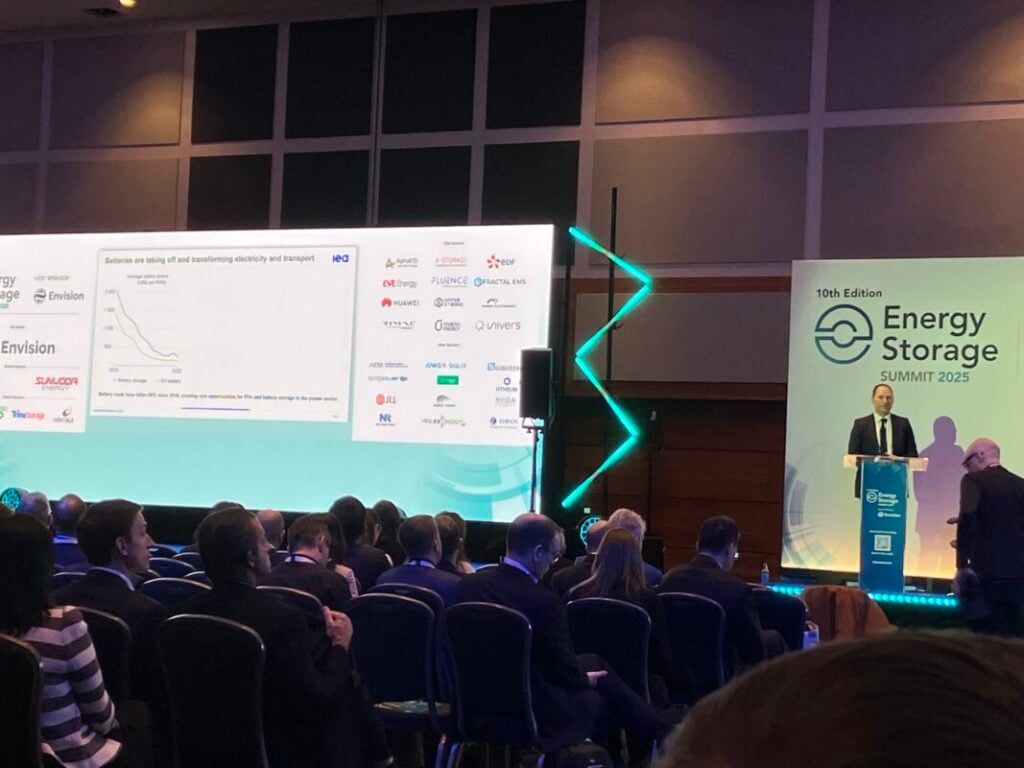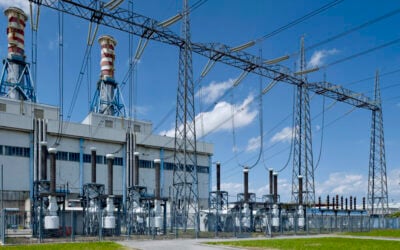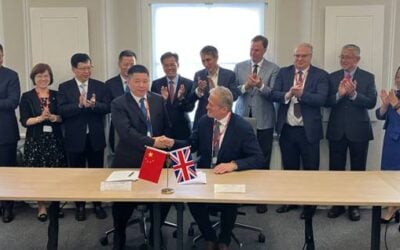
Our coverage of the Energy Storage Summit EU 2025, Europe’s biggest industry conference, continues.
The tenth annual edition of the summit has been its biggest yet, and conveying the sheer depth, scale and volume of insight, opinion and analysis heard across the two days is challenging, to say the least.
Enjoy 12 months of exclusive analysis
- Regular insight and analysis of the industry’s biggest developments
- In-depth interviews with the industry’s leading figures
- Annual digital subscription to the PV Tech Power journal
- Discounts on Solar Media’s portfolio of events, in-person and virtual
Nonetheless, read on below for some quick takes and stay tuned for much more coverage in the coming days on Energy-Storage.news and ESN Premium.
Some of the key themes that were returned to time and again included:
- BESS performance and availability including uptime are among the biggest concerns for operators.
- Noise is increasingly a consideration for siting and permitting battery storage.
- Co-location with renewables is a largely untapped area in Europe.
- The UK’s long-duration energy storage (LDES) Cap and Floor scheme is bound to attract interest from developers, technology providers and industry-watchers the world over.
- BESS component supply chains including cells are not constrained as they once were but grid connection availability, transformers and particularly workforce are bottleneck-creating pain points.
Europe’s hottest markets
No one can resist a discussion—or even a debate—on what makes an energy storage market exciting. So it was when panellists from Wärtsilä ES&O, Trina Storage, Fluence, developer Merus Power and infrastructure investor JLL convened for the session ‘The Big Debate: Where are the Hottest European Storage Markets?’ moderated by Wood Mackenzie principal analyst for energy storage Anna Darmani.
It is perhaps no surprise that the UK and Germany appear to top the bill right now, but Italy and Poland were also mentioned at length, while the Nordic ancillary services markets, and upcoming opportunities in Spain also got some attention.
We’ll have more detailed takeaways from the session itself in the coming days to tell you about, but we caught up with Darmani after it took place to ask what makes a market hot.
“You need the right regulations and legislation in place so that batteries can access the grid and then participate in the market and so on. The other thing is the depth of the market, the volume that is in the market,” Darmani said in an interview.
“This is one of the reasons a lot of focus is on the UK and Germany,” Darmani said while adding that the market fundamentals really distinguish those two: the UK an island without interconnection capacity to Europe, Germany with deep liquidity through its power market interconnection with nine neighbouring countries.
Solar more at risk of trade war impact than storage
Cristiana Dochioiu, investment manager at Railpen, one of the UK’s largest pension managers, said rising tensions between rival trading blocs had not yet had a direct impact on pricing in the BESS industry.
Answering a question on the likely impact of trade wars on the battery energy storage system (BESS) supply chain during a panel discussion on Day 2, Dochioiu drew a parallel with the solar industry, where trade disputes between the US and China have become entrenched.
“There might be some impact, potentially, on the solar side as there’s been some tariff implications between the US and China, which obviously would reflect down the stream from raw materials all the way to solar panels [on] pricing. But we don’t see any particular impact on BESS supply.”
Calculating the carbon benefit of battery storage
Yesterday saw the launch of UK BESS Carbon Emissions Calculator, a new open-source tool, which, as the name implies, is designed to calculate the emissions associated with battery storage.
As reported by our colleagues at Solar Power Portal, the calculator was created by developer Pulse Clean Energy in partnership with energy transition consultancy LCP Delta and the UK’s National Wealth Fund.
It leverages real-time data from UK electricity market operator Elexon and calculates emissions at half-hour intervals. You can read more about it here.
We caught up with Aazzum Yassir, Pulse Clean Energy’s director of technology and operations, who told us the project started as an exercise for the developer to conduct a complete lifecycle analysis of its batteries.
“We started this work over three years ago, where we basically determined what is the carbon footprint of procuring, building and constructing these batteries,” Yassir told Energy-Storage.news at the Summit yesterday.
“The major piece, the next hurdle, was to actually understand how they avoid emissions once in operation.”
Pulse’s team “went down a rabbit hole,” trying to find existing methodologies or solutions, but drew a blank. So a working group was created with partners LCP Delta and the National Wealth Fund, to jointly develop ways to figure out the avoided emissions.
“As part of this work, a novel methodology was developed by LCP, and that was great because it gave us an insight into how batteries avoid emissions, but the problem with that was it was essentially a Python script, not very easily deployable to anybody else.”
So the next step, Yassir said, was for the partners to see if a tool could be developed that could readily assess over a day, a month or a year, how any battery storage asset or portfolio in the UK had contributed to avoided emissions.
“Ultimately, what we’re hoping for is that policymakers can use this to actually see the good work of batteries. Then also it supports reporting. Equity investors and financiers get to understand the actual impact they’re having back through their investments, and we can show them a report that is produced based on this methodology.”
Read about the emissions calculator tool on Solar Power Portal.
Britain’s long-duration needs could be met by lithium-ion
Lithium-ion battery storage could largely meet the need for long-duration energy storage (LDES) on the grid in Great Britain (GB), James Mills of investor Adaptogen Capital said in a panel discussion today.
Mills said that in the long term, storage and batteries are the “only way” to solve the “massively complex” green grid due to be established by 2040.
While governments are currently primarily focused on the clean power targets set for 2030, continuing on to meet legally binding 2050 carbon reduction targets will require significant battery storage deployment, the panel agreed.
“The rate of change in BESS technology and the cost curve is extraordinary,” Mills said, with system requirements likely to push demand for 10-hour duration of discharge or more in the coming decades.
UK solar duck curve to increase negative pricing but zonal pricing and wind are the X factor
The UK’s Contracts for Difference (CfD) scheme is bringing more solar PV online which will create more of a duck curve in daytime electricity pricing, Scott Berrie, asset development director at GridBeyond, said yesterday.
Speaking in the panel discussion, ‘Are Batteries Still a Hedge for Renewable Assets in Europe?’ Berrie said that, as seen in other markets such as California or Australia, “the more we can build in batteries, the more we can minimise price fluctuations and delivery fluctuations.”
Both standalone BESS and batteries co-located with solar can be a good hedge for investors under a central pricing model. However, according to Berrie, if the UK government’s ongoing Review of Electricity Market Arrangements (REMA) results in the creation of regional pricing as some have advocated for, this might give a stronger signal to co-locate.
“Not only is it a better hedge for power delivery price, you also get to share grid connection points, so it’s a capex [benefit].”
Peter Bolton of renewables and infrastructure investor Korkia said that negative prices are already being seen, and the CfD structures them so that they are at the asset owner’s risk.
Corporate power purchase agreements (PPAs) might be expected to carry similar sorts of risk, Bolton said, meaning that if batteries can be used to shift output from negative price periods to positive, “you’ve massively improved your financial model.”
“The grid addition cost to add the batteries [is] minimal, so in all of those ways it would be a sensible business model decision.”
However, as Dario Hernandez, head of energy storage at another investor, NextEnergy Capital, said, the UK’s energy sector sees a much greater contribution from wind than solar, which is driving the market’s huge appetite for 1-hour and 2-hour duration BESS assets.
“From a portfolio point of view, we will see more emphasis on the wind than the storage side,” Hernandez said, adding that the month-by-month revenue and cashflow from a wind-and-storage portfolio focused on the opportunities for mitigating wind curtailment is more stable than one focused on intraday solar shifting.
The mighty ESN Wheel of Fortune
We had four lucky winners of month-long and full-year ESN Premium subscriptions at the Energy-Storage.news stand via our ESN Wheel of Fortune! Congratulations to the winners including [ ] from Sunwoda.







